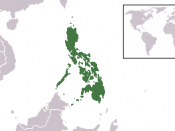THE ESSAY: As in poetry and the short story, the essay grew in many ways: in variety of subject, form, and style; in the number f productive authors; in he quantity and quality of their works. The old guard, composed of Romulo and his contemporaries, continued writing into this period, achieving stature and influence as editorial writers. Similarly, Vicente Albano Pacis, Federico Mangahas, Salvador P. Lopez, Jose A. Lansang, Ariston Estrada, and Pura S. Castrence distinguished themselves in political, social, and other reflective types of essay, largely through the newspaper columns. Ignacio Manlapaz, SalvadorP. Lopez I. V. Mallari, Jose Gacia Villa, Arturo B. Rotor, and Leopoldo Y.Yabes wrote criticism that compelled attention and directed creative writing, and was in itself significant writing, Solomon V. Arnaldo, F. B. Icaiano ("Mang Kiko"ÃÂ), Alfredo D. Litiatco, Armando G. Dayrit, and Consuelo Grau ("Catuca"ÃÂ) enlivened the scene with light-hearted and charming personal essays.
Three collections of essays stood out from the rest during this period. Thinking for Ourselves, edited by Eliseo Quirino and Vicente M Hilario (1924), which contained the best, most serious and most challenging essays, original and translated, of Filipino scholars and leaders (1924); Literature and Society nby Salvador P. Lopez (1940), the prize-winning essay collection in the 1940 Commonwealth Literary Contest, consisting of reflective, critical, and otherwise serious essays; and Horizons from My Nipa Hut, by Mang Kiko (pseudonym of F. B. Icasiano)which were reprints of the best of Icasiano's essays previously published in Sunday Tribune Magazine under the column head "From My Nipa Hut"ÃÂ. Printed in 1941, Horizons is a relief from Lopez's soberly thoughtful Literature and Society. It is delightfully "of the people,"ÃÂ for even its philosophical passages are stamped with the gentle humor and broad sympathy that attract the common tao./ In 1940 also,Camilo Osias published concept...


